Today, I initiate a series of posts based on some of the geology I saw over spring break, in west Texas and southern New Mexico, on the field exchange between Northern Virginia Community College and El Paso Community College that I helped facilitate.
We spent our first morning in the field in the Franklin Mountains, due north of El Paso (and, for that matter, Ciudad Juarez).

It was unseasonably cold as we climbed up through the fine-bedded strata of the El Paso Group (Cambrian) to check out the more massive, heavily bioturbated Montoya Group (Ordovician):


We started on the southern tip, on the west side, where several of the layers (tilted to the west due to Rio Grande rifting) had slumped down the dip-slope along weaknesses along the bedding plane.
Here, Sarah, Daniel, and Marcelo examine the rubbley mass of fractured rock where a sheet of the Montoya Group slid down atop younger layers. You can see the coherent dark gray limestones below them, the relatively coherent stratum above their heads, and also the whitish crumbly looking mass that extends 1-2 meters above their heads (it includes several large chunks of gray limestone):

Overall, these bedding-parallel landslide blocks are known as the Crazy Cat Landslide.
The Montoya Group strata were originally deposited in passive margin conditions of the Sauk Sea, a major epeiric sea that flooded the ancestral North American continent during early Paleozoic time. It’s chock full of fossils.
Here is a great example of Halysites, a “chain coral”:

Zooming in for a closer (though not entirely in-focus) look at the structure of the colony:
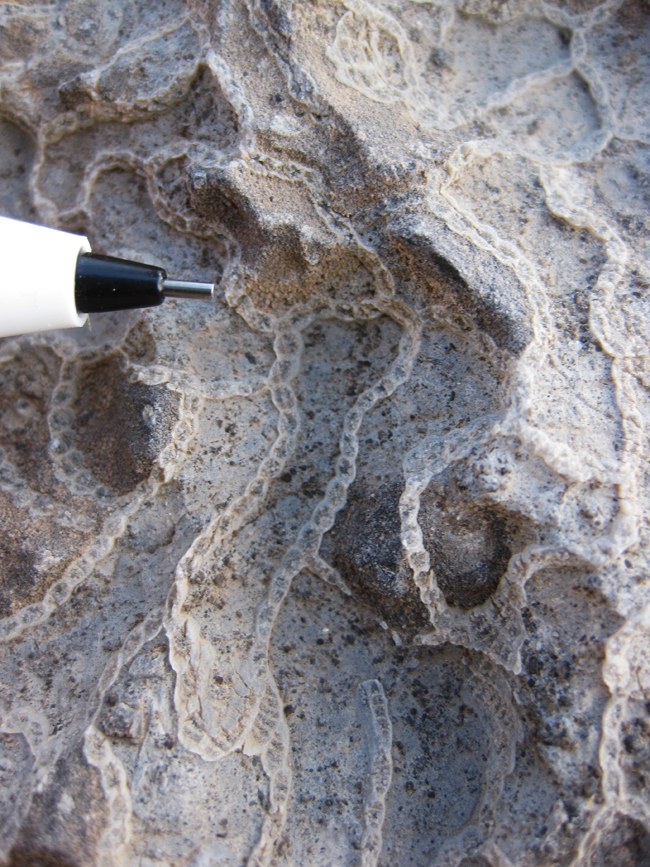
It wasn’t all sessile critters. Here, side by side, are a straight nautiloid (an “orthocone”) and a big snail:

Another enormous gastropod / snail:
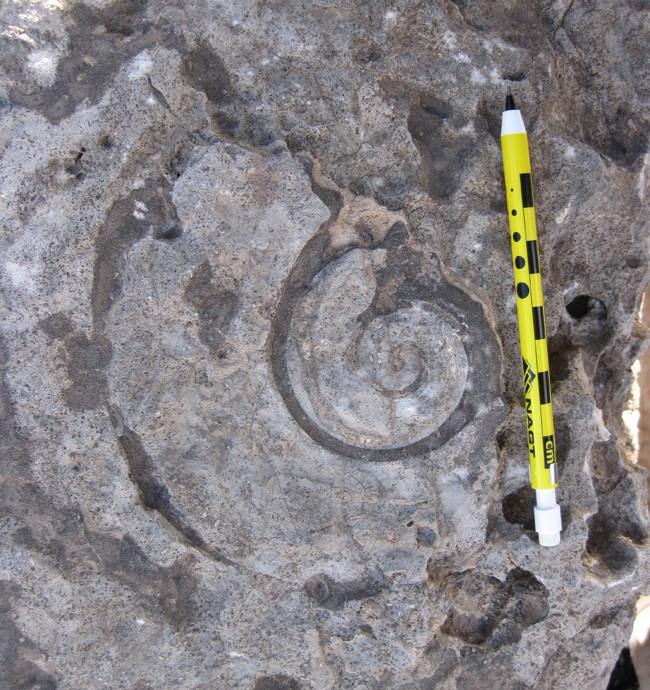
And here is another mighty orthocone:
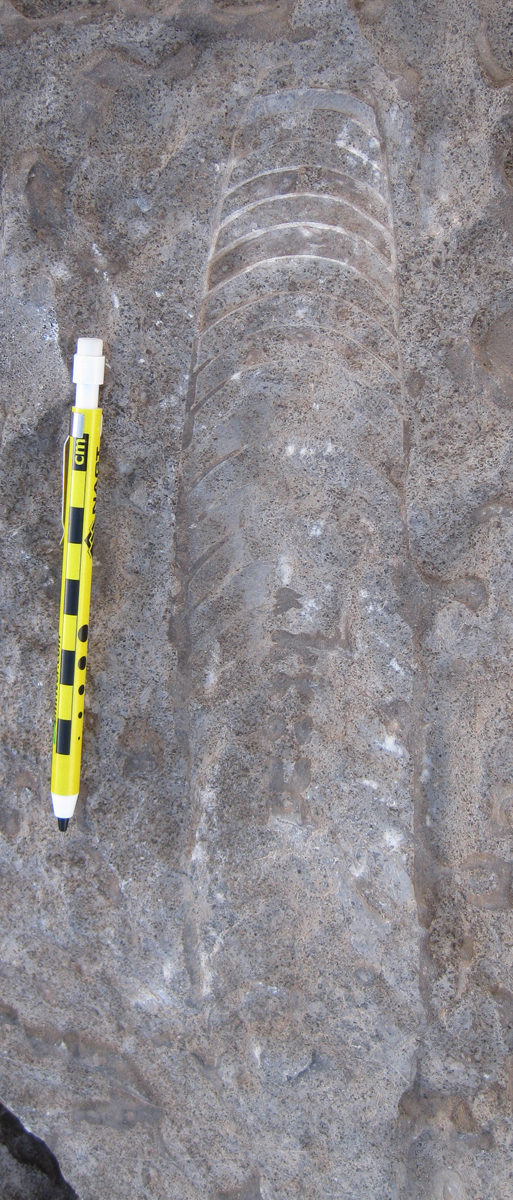
Lastly, consider this specimen of Receptaculites, the odd “sunflower coral” which was likely not a coral at all:
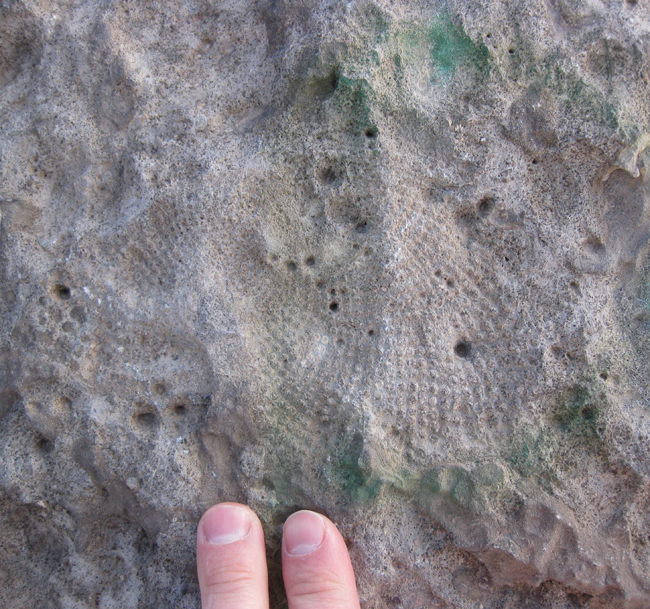
We also spotted some faults that were not parallel to bedding, but instead cut clean across it. Here’s an example, filled with calcite-cemented fault breccia:
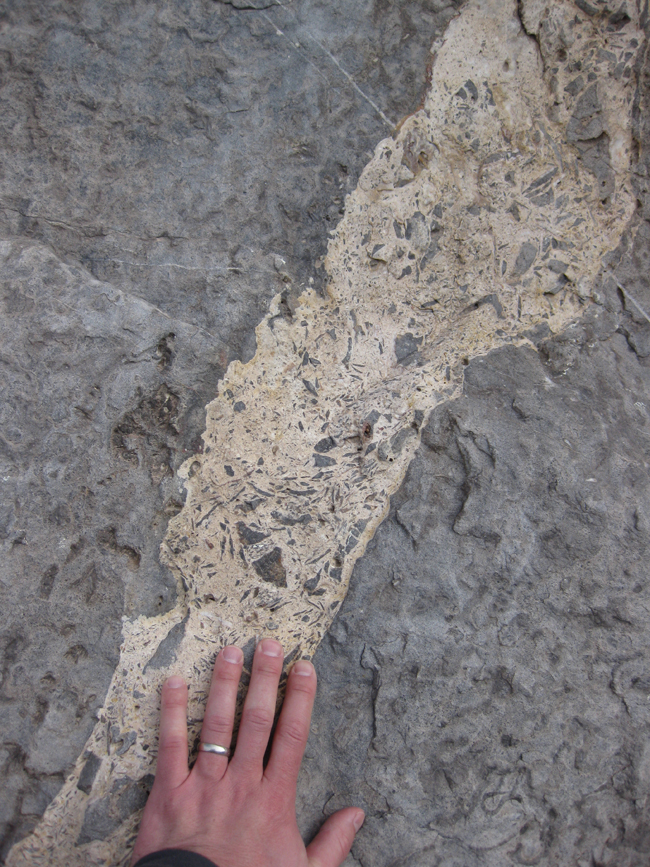
Here’s another, pretty much crushed beyond breccia into a proper “gouge”:

But what’s the offset there? I didn’t see a really distinctive marker bed that I felt I could hang my hat on. I walked out the trace of the fault.
I found a good layer some distance uphill that showed the offset, though it was in a small parallel fault and not the main zone of white gouge:
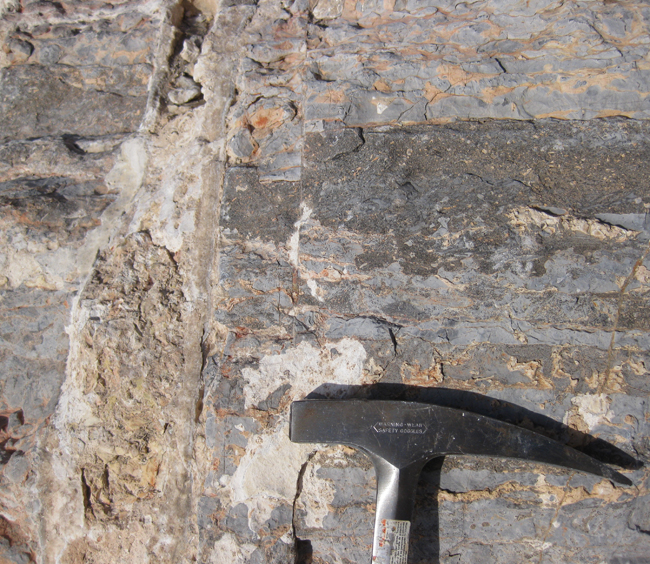
Offset was apparently left lateral, with the north side of the subvertical fault moving ever-so-slightly westward.
As we hiked along, the sun rose, and we warmed up both physically and mentally. These were great rocks to start the trip with!

I did some work in the Montoya group. Those cherty layers with the faults are the Aleman Fm, I think. Offshore formation, fine gained lime mudstone and tons of chert (sponge spicules), rich offshore upwelling. The Late Ordovician was starting to get cool before the great Hirnantian extinction, and so the ocean currents were starting to really churn. The 3 main formations, including the Aleman are third order sequences, partly caused by 1-3 Myr long term orbital cycles (after the ~23k precession cycle, the 41k obliquity cycle, and100k and 400k eccentricity cycles are others, a ~1 Myr obliquity and a ~2.5myr eccentricity one.)
Mark,
you are definitely right about the Aleman Fm. having the stringers and lenses of black bands of chert! It’s the Aleman that in some parts acted as a gliding plane for the Crazy Cat Landslide. But the unit the students are actually walking on is the upper most part of the Lower Ordovician El Paso Group (Scenic Driver and Florida Mountain Fms.) which are below the Upper Ordovician Montoya Group (Upham [dark gray dolomite in the pics], Aleman, and Cutter Fms.). We’re missing the Middle Ordovician here in EP so we have a nice unconformity of about 25 millions between these two groups!
Cool, I’ve walked over the El Paso group I think. The work I did was in the Cookes range, N of Deming and some hills just W of T or C (Mud mountain?). I never got the chance to go down to El Paso to see the Crazy Cat landslide! In the Cookes range, the Aleman’s chert-mudstone rhythmites are pretty spectacular.